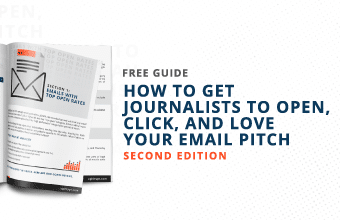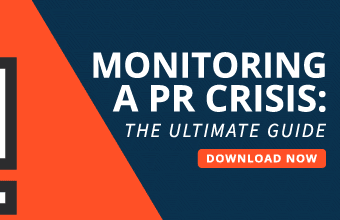Influencer marketing—you’ve heard a lot about it, and the potential benefits it can have on your business and communications efforts. For example:
- Increasing earned media for your brand;
- Increasing the reach of your message through your desired audience;
- Increasing the size of your audience and customer base;
- Helping your brand penetrate new markets;
- Influencing your brand’s reputation; and
- Reinforcing your brand’s positioning.
The purest definition of an influencer is someone who has an important voice in the conversations surrounding a topic, brand or industry. But businesses tend to focus on developing relationships with influencers who speak positively for their brand, and understandably so: These relationships can eventually convert influencers to brand advocates, maybe even brand evangelists.
But what about the naysayers? Or the “badvocates”?
Those who speak critically about your business, product/service, or industry have the ability to completely obliterate your reputation management efforts and put your business into crisis mode. And though you may not always change their minds or position on the matter, listening to badvocates can offer a lot of fodder for self-reflection along with helping to improve your communications efforts in the future.
What does this mean for your current influencer marketing strategy?
Adjacent to reaching out and having others advocate for your brand, use negative influencer feedback to do a better job of advocating for yourself. Show your audience how you can effectively respond to badvocates, and in turn you’ll see more people advocating positively for your brand. We’ll call it negative influencer marketing—the act of leveraging negative public opinion to build brand strong brand loyalty and trust through communications efforts.
So how do you go about turning badvocates into your comms strategy’s best friend?
It’s all about finding commonalities between your negative influencers, which in turn allow you to communicate with them more easily. Any commonality could do, but for the purpose of this piece, they’re separated into three groups: topic, location and interest group/demographics. Or: what, where and who is negatively influencing on your brand. You can use media monitoring and analysis software to make this task a little more manageable:
1. Is there a common topic?
When analyzing what your badvocates are saying, is there a subject-based trend in their criticisms? Do you see recurring keywords and/or topics? For example, an oil company may have a group of negative influencers who are continually criticizing the company’s disregard for the environment. Common keywords this company might see are “pollution” and “environment.”

Remember April 23, 1985? Maybe not, but it’s one of the most infamous days in beverage marketing history. This was the day that Coca Cola released New Coke—which had customers fuming, wondering why the company was changing their legendary recipe after 99 years. Listening to the negative feedback surrounding the taste of their new product line, Coca Cola quickly reverted back to its original recipe. Through this, the soft drink Goliath learned to value consumer opinion and respected the bond consumers had formed with the soon-to-be-named Coke Classic.
Understanding common complaints and sore spots within your audience can help your business build better communications strategies that more effectively address these concerns. By mirroring keywords and topics in your messaging, you’re showing that, as a brand, you’re listening to your negative influencers and trying to build transparency and trust within your audience.
2. Is there a common location?
When taking a look at the publications that are providing negative coverage for your business, do you see a regional trend? Perhaps the negative perception of your brand is limited to one geographic area. For example, if a company is cutting jobs in a specific city because the market isn’t doing very well, citizens and journalists of that area may provide a higher number of negative mentions for that brand.
A more international, marketing-related example would be when European telecommunications giant Orange experienced slogan controversy in Northern Ireland back in 1994. “The future’s bright … the future’s Orange.” didn’t sit well with Irish Catholics because it referred to the Orange Order—which, in Northern Ireland, refers to loyalist and protestant mentalities. Orange responded to this negative feedback regarding this campaign by completely changing their advertising strategy for Northern Ireland, showing its sensitivity towards the area’s culture and history.
By understanding where a lot of your negative influencers reside, you can tailor messaging and communications strategy specifically to that location. By doing a little extra research and understanding the economic and social structure, as well as the area’s overall culture, you can be more effective and empathetic in your responses. This shows that, as a brand, you care about the overall brand experience of your audience. Keep in mind that local language and translation can have a big impact on how communications messages are received.
3. Is there a common interest group or demographic?
Do you find the majority of your naysayers are of a certain age? Gender? Or maybe they all have a similar interest? For example: A company runs a marketing campaign that inadvertently offends a certain demographic, interest group or subculture. Maybe this company didn’t even consider these publics as one of its target audience. These publics then take to social media to voice their criticisms of the brand—negative influencers in this space rally support from similar publics, and the company sees more negative brand mentions from certain demographics, interest groups or subcultures.
Mommy Bloggers are not a force to be reckoned with—just ask Motrin. The pharmaceutical company ran an advertisement on motrin.com that discussed the “trend” of baby carrying. Mommy Bloggers weren’t upset that the company was running an ad on the topic, but were offended that Motrin insinuated that baby carrying was a “fashion statement.” Word spread like wildfire throughout the Mommy Blogger community, and eventually the story hit mass media. Motrin removed the advertisement from its website, and each negative influencer received an email from the company’s vice-president apologizing for the incident.
Understanding who is negatively influencing conversations around your brand allows you to effectively tailor responses and key messaging. By understanding the demographic, interest group or subculture commonality, you can address concerns in a tone and voice that speaks to these publics, as well as acknowledge the impact of your previous communications and how you hope to resolve the issue. Or you can begin making new communications strategies for this new audience you didn’t even consider.
You may still be wondering: “How does this strategy build brand advocacy and trust?”
By addressing who, what, and where has the most impact on your brand’s perception in a responsible, transparent, and intelligent way, people will begin to take notice. You’ll begin to identify positive influencers that defend your statements, as well as possibly convert some of the badvocates into proper advocates.
You’re the best advocate for your brand—and if you can genuinely and authentically make a good case for yourself and why your target audience should believe in your brand promise, vision and message, others will follow suit.









